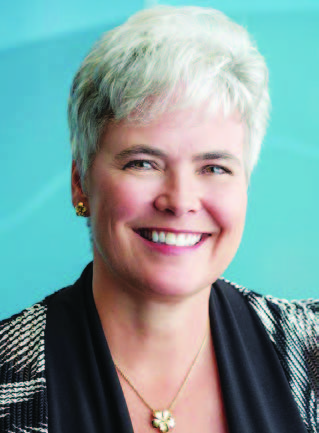Doctors of BC’s strategic plan versus the pandemic
 |
| Dr Kathleen Ross |
“Everything is unprecedented until it happens for the first time.”
—Captain Chesley Sullenberger
When I stepped into the role of president-elect for Doctors of BC in 2018, I could not have foreseen that my election would land me as a leader of our profession in the race against time to mitigate a global pandemic. I took up this post as I believed in Doctors of BC’s organizational vision (expressed in the Strategic Framework: www.doctorsofbc.ca/sites/default/files/strategicframeworkbooklet2018-2023.pdf) and our purpose statement: “Better Together. Making a Difference for BC Doctors.” While these proclamations may at first blush seem to be quite lofty or high-level, the intention behind them colors and drives our organization’s work every single day.
These times are truly unprecedented. Who could have predicted how nimble our health care system needed to become to address the SARS-CoV-2 crisis, or just how quickly new models of care would need to evolve to protect patients and front-line providers? I would argue that Doctors of BC was ready, and I recently reflected on our Strategic Framework to try and understand why this was the case.
Over the last decade, Doctors of BC laid the strong foundation we needed to weather this crisis. Our professional organization has invested time and financial resources into building an engaged and connected physician membership that could make the necessary adjustments in a timely fashion.
Mr Allan Seckel, our CEO, envisioned our strategic framework as a set of stairs, beginning with the first step of understanding our doctors and the environment in which they work. Establishing divisions of family practice and medical staff associations in conjunction with our government partners, via the joint standing committees, left us uniquely poised to understand where barriers exist to achieving optimal patient care at a grassroots level. These strong, independent, yet closely linked organizations lead the crucial work required across BC’s diverse medical communities.
Engaging with our doctors and assisting them in raising concerns with the health care system at large, established the trusted channels of communication needed to fight this pandemic. Physicians’ voices were empowered, respected, and heard prior to the onset of this crisis. Our profession was already developing a modern and innovative system, which prioritized the most optimal patient experiences. The development supported timely access to care, patient choice, and longitudinal, relationship-based primary care.
Our doctors and their health care administrator counterparts were already working together, collaborating to improve the quality of patient care. We were beginning to hear the voices of our patients and caregivers lead some of these conversations on equal footing with those who treat, and those who support treatment. We were ensuring an effective relationship between Doctors of BC, government, and each of the health authorities, built on mutual understanding between physician leaders and the needs of the health care system at large.
Members of Doctors of BC understood that one of our organization’s key priorities was serving them and assisting them with benefits, services, and personal- and practice-level supports. There has never before been a time when our members have needed more support to change practice models, payment models, IT and security platforms, and business practices as a whole. The Doctor’s Technology Office was already a well-known resource, and it was able to step forward and assist physicians in changing quickly. Our joint standing committees quickly developed new fee codes to reflect the new reality of practice. The well-established collaborative channels smoothed the way for the government to adopt these changes to improve patients’ access to necessary care.
Finally, Doctors of BC has played a tremendous role in advocating for our members to ensure strong public confidence in our medical profession through actions such as promoting public health and safety matters since the very beginning. The public was prepared to look to physicians as the source of truth and understanding in a time of so much misinformation. When our provincial health officers and many of our members told the public to stay home and physically distance themselves, it meant something powerful. Patients looked to us for accurate information to keep them safe and to ensure that they could still access the care they needed when our hospitals stood half empty to prepare for the surge.
So, as I reflect on the strength of our profession through these exceptional times, I must relay tremendous gratitude to every physician, and all Doctors of BC staff who have poured so much of their energy into empowering our organization. We came into this crisis well poised to succeed and I believe we have. Our future will be very different, and physicians are again uniquely poised to lead the evolution of our health care system to better meet the needs of patients, families, caregivers, and physicians. We are no longer shouting into the wind; we are soaring.
—Kathleen Ross, MD
Doctors of BC President


I appreciate Dr. Ross pointing out the very good things about our profession and it’s relationship with government. Of course these things can always be improved upon.
However I believe that the health and well-being of physicians themselves is one of if not the most important aspects to a well functioning health care system. If doctors are stressed and pushed to the limit we are not able to meet the needs of a stressed population we serve.
I believe physician health is part of the strategic framework that needs to be addressed more fully at this critical and unprecedented time in which we live.